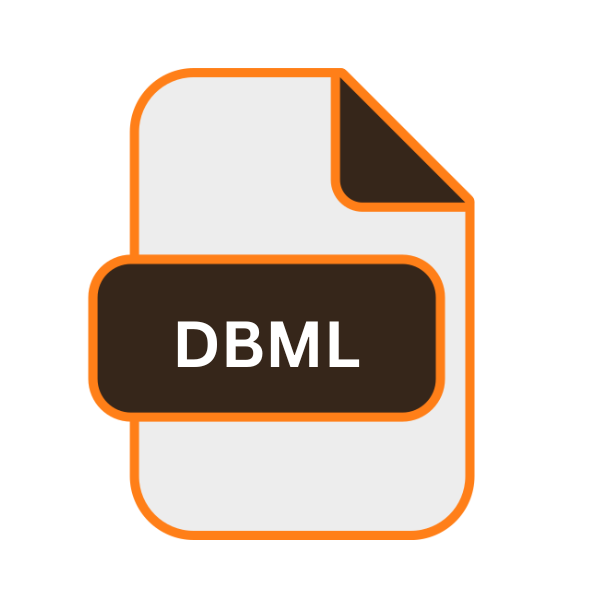.DBML File Extension

Visual Studio OR Design File
| Developer | Microsoft |
| Popularity | |
| Category | Developer Files |
| Format | .DBML |
| Cross Platform | Update Soon |
What is an DBML file?
In the realm of software development, where meticulous organization and management of data are paramount, file extensions play a crucial role. One such extension is .DBML, often associated with Visual Studio or as a design file in various programming contexts.
Understanding its origins, structure, conversion methods, and compatibility across different platforms is essential for developers seeking efficiency and clarity in their projects.
More Information.
The inception of .DBML files can be traced back to the mid-2000s when Microsoft introduced LINQ (Language Integrated Query) as a set of features in .NET Framework 3.5. LINQ to SQL, a component of LINQ, provided a simple way to integrate SQL database access into .NET applications.
.DBML files were introduced as part of this framework to enable developers to visually design the structure of their databases within Visual Studio’s IDE.
Origin Of This File.
The .DBML file extension is primarily associated with Visual Studio, Microsoft’s integrated development environment (IDE). It stands for Database Markup Language, indicating its purpose in describing the structure of a database.
Initially introduced as part of Visual Studio’s LINQ to SQL functionality, .DBML files serve as a visual representation of a database’s schema, facilitating the mapping of database tables to object-oriented constructs in .NET languages like C# and VB.NET.
File Structure Technical Specification.
.DBML files are XML-based, utilizing a markup language to define the structure of the database. They contain elements representing tables, columns, relationships, and other metadata necessary for mapping the database schema to object-oriented constructs.
How to Convert the File?
Converting .DBML files to other formats or platforms may be necessary to overcome compatibility limitations or to integrate with non-Microsoft technologies. Below are some methods for converting .DBML files:
- Manual Conversion: Developers can manually translate the contents of .DBML files into alternative formats compatible with their target platforms or tools. This approach requires a deep understanding of both the .DBML structure and the target format.
- Third-Party Tools: Several third-party tools and libraries offer conversion utilities for .DBML files. These tools may automate the conversion process and provide options for exporting .DBML files to formats such as SQL scripts or ORM (Object-Relational Mapping) frameworks compatible with different programming languages and platforms.
- Custom Scripts: Developers can create custom scripts or utilities to parse .DBML files and generate code or database schema definitions in desired formats. This approach offers flexibility but requires programming expertise and ongoing maintenance.
Advantages And Disadvantages.
Advantage:
- Visual Representation: .DBML files provide a visual representation of the database schema, making it easier for developers to understand and manage the structure of their databases.
- Integration with Visual Studio: Being tightly integrated with Visual Studio, .DBML files streamline the development process by allowing developers to work within a familiar environment.
- LINQ Integration: .DBML files facilitate LINQ to SQL mapping, enabling developers to seamlessly query databases using LINQ syntax.
Disadvantage:
- Limited Compatibility: .DBML files are specific to Visual Studio and .NET Framework, limiting their usability in non-Microsoft environments.
- Maintenance Overhead: As .DBML files represent a static snapshot of the database schema, keeping them synchronized with the actual database structure can become cumbersome, especially in large projects with frequent schema changes.
- Vendor Lock-in: Reliance on Visual Studio and .NET technologies may lead to vendor lock-in, restricting flexibility in choosing alternative development tools and platforms.
How to Open DBML?
Open In Windows
- Double-click on the .DBML file, and it should open in Visual Studio automatically if it’s installed.
- If Visual Studio isn’t set as the default program, right-click on the file, select “Open With,” and choose Visual Studio from the list of programs.
- Alternatively, you can open Visual Studio and use the “File > Open” option to navigate to the .DBML file and open it directly within the IDE.
Open In Linux
- Visual Studio isn’t natively available on Linux. However, you can use alternative IDEs like Visual Studio Code.
- Install Visual Studio Code on your Linux distribution.
- Install the necessary extensions for .NET development within Visual Studio Code.
- Once set up, you can open .DBML files in Visual Studio Code for viewing and editing.
Open In MAC
- Similar to Linux, Visual Studio isn’t available natively on macOS.
- Install Visual Studio Code on your Mac.
- Set up Visual Studio Code for .NET development by installing relevant extensions.
- Open .DBML files in Visual Studio Code for viewing and editing.
Open In Android
- .DBML files aren’t directly compatible with Android development.
- If you’re using Xamarin for cross-platform development, you can include .DBML files in your shared codebase and access them as needed.
- However, .DBML files won’t have a direct impact on Android app development, as they are primarily used in database management within Visual Studio for .NET projects.
Open In IOS
- Similar to Android, .DBML files don’t have a direct relevance to iOS development.
- If you’re using Xamarin for iOS development, you can include .DBML files in your shared codebase and utilize them within your Xamarin.iOS project.
- Otherwise, there are no native methods to open .DBML files on iOS devices or within iOS development environments.
Open in Others
- Outside of the Windows, Linux, macOS, Android, and iOS ecosystems, opening .DBML files directly may not be feasible.
- However, you can still work with .DBML files by using conversion methods mentioned earlier in the article.
- Convert .DBML files to alternative formats or integrate them into platforms using custom scripts, third-party tools, or manual translation, depending on your specific requirements and development environment.













